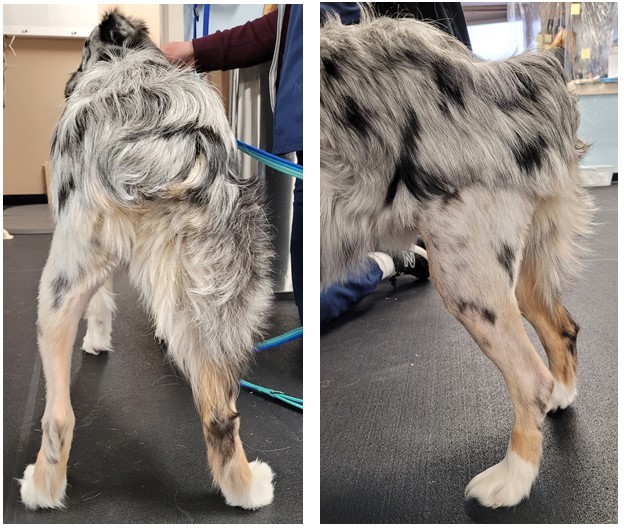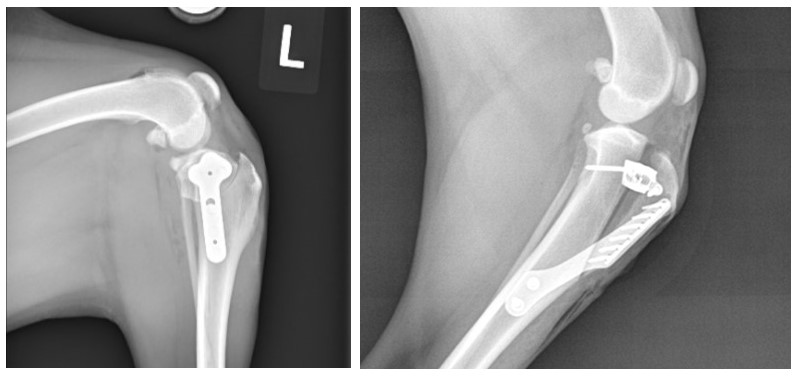Returning to Normal after an Injury
By Cathryn Adolph, LVT, CCRP, CCFT
Your dog has torn their cruciate ligament and had surgery to repair it. They appear to be using their leg well but your rehabilitation team requests a few more weeks of appointments before graduation. Why would your team request this or what makes us hold back a little bit? Let’s dive into the “whys” behind returning a dog to normal activity.

What is normal activity?
This is going to vary from dog to dog. A young very active dog will have different stresses on their limbs and joints versus a less active dog that would prefer a nap instead of ball play. Our Client History Form helps us understand what your dog’s level of activity and life style was prior to their injury. Discussing rehabilitation goals along with reassessment parameters help us decide if we are heading in the right direction and ensure that our goals are realistic for the patient in front of us.
Canine athletes, from hobby to national competitors, from agility to dock diving, require more specialized conditioning to return to sport. So much so, that next month’s blog will discuss Returning to Sport.
Reassessment Parameters
Rehabilitation for a knee surgery begins with pain control, strengthening in a controlled manner, and once ready increasing the stress on the limb to prepare for normal activity. This helps us determine where your pet is in the rehabilitation process. Reassessment parameters are your rehabilitation team’s process of applying measurable data to your pet’s progress. In general medicine, this may be comparable to an abnormal thyroid level. Once we start treating an abnormal thyroid, your pet’s behavior and activity will change for the better. However, blood work is repeated to make sure we don’t go too far and over correct those thyroid levels.
Why isn’t my dog ready for graduation?
The most common reason a dog does not graduate is one or more of the reassessment values are still significantly off. Our measurements for a dog presenting for rehabilitation after a cruciate surgery include joint range of motion, weight bearing on the limbs, and muscle mass. Ideally, your dog should bear 40% of their body weight in the hind limbs, so 20% on each hind limb. For muscle mass, we like to see a well-muscled limb that is close to if not symmetrical to the non-surgical leg.
So let’s hypothetically discuss a tale of two dogs who had knee surgery. For the sake of simplicity, both are healthy, young Labradors, high energy, same type of surgery on the right leg, and both done on the same date about 12 weeks prior. An x-ray shows that both dogs have complete bone healing at their surgery site. Dog A is bearing 18% on the surgery leg and both thighs measure within 0.5 cm of one another. Dog A is ready to increase his activity to more off-leash play and running in a controlled manner and will graduate soon. Now dog B is only bearing 8% on the surgery leg and has a 7 cm difference between his hind limbs muscle mass measurements. Dog B is not ready for physical stress of increased activity, in fact rigorous play is more likely to cause an injury since he is compensating so much.

Treating the Dog in Front of Us
In general, we expect 12 to 16 weeks of rehabilitation after a knee surgery. However, every dog is different and your dog may need a little longer. Age, activity level prior to surgery, pre-existing conditions, weight, and more can all play a role.
